Russia's summer push in Ukraine targets three fronts but faces stern resistance
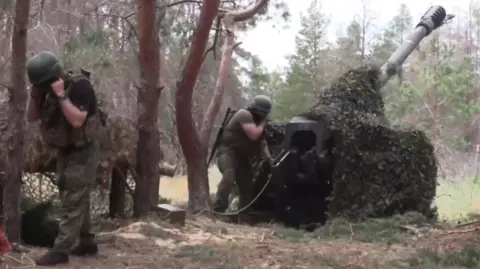 Russian defence ministry
Russian defence ministryWhile Russia's overnight drone and missile attacks on Ukraine have hit record levels, on the ground its military is claiming territorial gains.
Last month Russian forces seized 556 sq km (215 sq miles), its biggest land grab this year, according to the open-source DeepState monitoring website in Ukraine. That is an area four times the size of Liverpool and nearly the same size as the city of Chicago.
Russia's goal is to cut off supply routes used by Ukrainian troops in the east, and create a buffer zone inside Ukraine's northern borders.
But its advance remains relatively slow. At this pace it would take more than 70 years to capture the entire country.
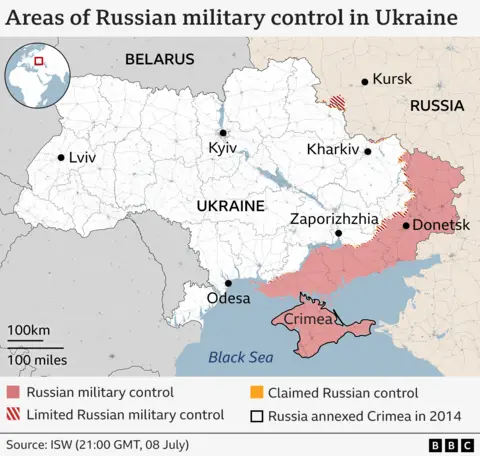
Most Russian attacks have been concentrated on three areas:
- The Sumy region that borders Russia in the north-east
- The two eastern cities of Pokrovsk and Kostyantynivka
- A third front, west of Pokrovsk
Russian troops managed to push about 10-12km (6-7.5 miles) deep inside the Sumy region, but that advance has come to a stop in the face of fierce resistance.
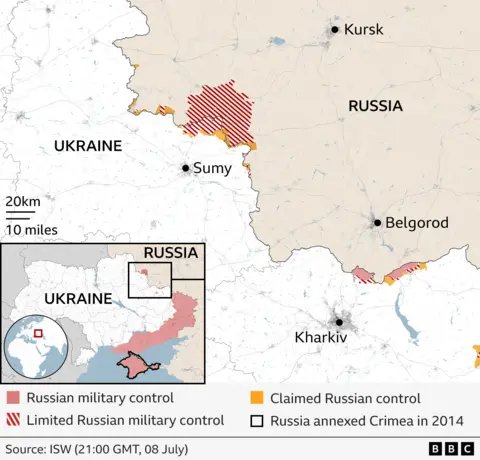
Vladimir Putin says he wants to create a buffer zone to protect Russian territory, after Ukrainian forces captured a swathe of Kursk territory last summer. Russian forces eventually drove them out, with the help of North Korean troops and ammunition.
The Russians then crossed into Ukraine but quickly became bogged down in fighting over small border villages, which keep changing hands even today. Without major reinforcements, it is unlikely Russian troops will be able to push much further here.
Another northern region where Russia's army has reportedly crossed the state border is Kharkiv. Last week they claimed the capture of a border village, but without committing substantial resources they are unlikely to make further gains.
Read more:
Military observers believe these operations are aimed at forcing Ukraine to spread its forces too thin along the entire 1,200-km long front line, so that they divert troops from key areas.
One of those frontline areas is Pokrovsk, a strategic hub in eastern Ukraine, which Moscow has been trying to capture for more than two years. According to the head of Ukraine's army Gen Oleksandr Syrskyi, Russia has concentrated some 111,000 troops in that area.
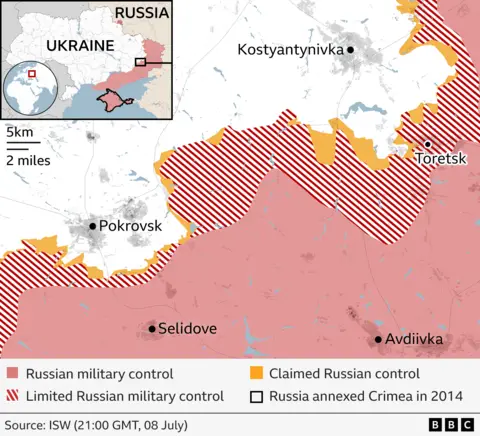
Russians rarely launch massive assaults, says Lt Artem Pribylnov from Ukraine's 155th brigade, stationed near Pokrovsk.
Any large movement of troops and armoured vehicles will be quickly detected and destroyed by drones. Instead, Lt Pribylnov says, the Russians rely on small groups of infantry troops who relentlessly attack Ukrainian positions, sometimes on motor bikes but more often on foot.
This kind of "creeping offensive", as some call it, is aimed at exhausting Kyiv's resources until endless waves of Russian soldiers eventually push the Ukrainians out of their positions. But the price they pay is frighteningly high.
Ukraine's general staff puts Russia's casualties at more than 1,000 soldiers a day. The BBC cannot verify these figures independently, but they do indicate the heavy losses Russia is suffering.
Russia's aim in eastern Ukraine appears to be to create "a cauldron", semi-encircling the Ukrainians around Pokrovsk and Kostyantynivka and then forcing them to retreat.
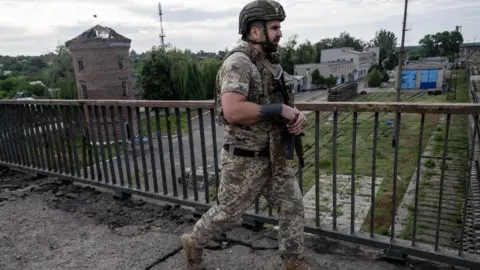 UAF 93rd Brigade
UAF 93rd BrigadeRussian troops are now trying to wedge into the area between these two cities to create "a bridgehead from where they can attack Pokrovsk or Kostyantynivka", says Maj Viktor Trehubov, a spokesman for the Khortytsya operational-strategic group, which co-ordinates forces in eastern Ukraine.
A breakthrough here is not considered likely. Russia's advance between Kostyantynivka and Pokrovsk is already slowing down and earlier attempts to push from other sides have stalled.
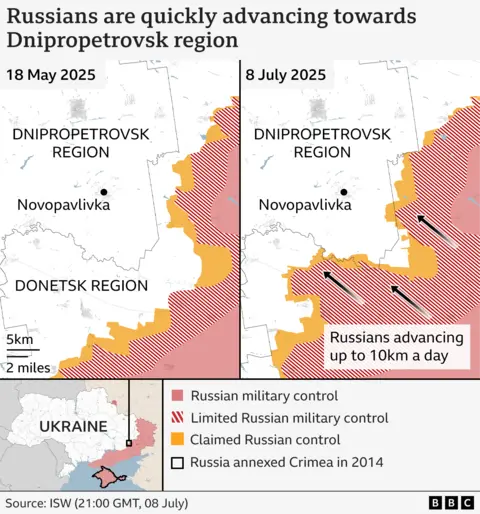
The biggest Russian gain in recent weeks was further west from Pokrovsk, in an area referred to by the Ukrainian military as the Novopavlivske direction, named after the village of Novopavlivka which became a defence hub following the westward retreat of Ukrainian troops.
Military observer Kostyantyn Mashovets says Moscow's operation there was most threatening for Ukraine as its defence measures "collapsed", allowing the Russians to advance up to 10km a day.
Their move was so rapid that Russian military bloggers even claimed that their troops had reached the neighbouring Dnipropetrovsk region for the first time since the start of the invasion.
Ukrainian military officials deny these claims, saying that a small group of Russian soldiers entered a village in the Dnipropetrovsk region to take photos with a Russian flag but were quickly "eliminated". The Institute for the Study of War, however, indicates that Russian troops are still operating there.
Maj Trehubov argues this area offers little strategic advantage for Russian troops and their assault was instead motivated by political goals.
Advancing further into Dnipropetrovsk region may work well for propaganda messages, but would require greater resources that are currently tied up in Pokrovsk and Kostyantynivka.
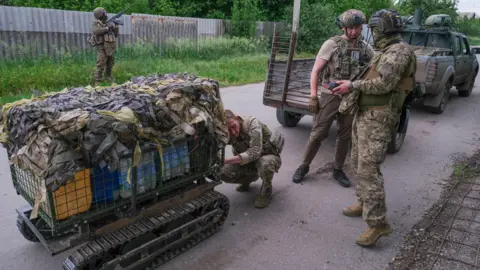 UAF 93rd Brigade
UAF 93rd BrigadeThe Ukrainians are nevertheless facing increasing pressure on the front lines, as Russian troops are constantly trying to cut off their supply lines with drone attacks.
"Those routes that we used two months ago, we can't use them now, not during the daytime, not even at night," Staff Sgt Viktor Pyasetskyi from Ukraine's 93rd brigade stationed near Kostyantynivka told the BBC over the phone.
As a result it has become extremely complicated and slow to deliver food and ammunition, evacuate the wounded and rotate troops on the front line.
Russian drones like the Gerbera can fly for hundreds of kilometres to reach places that until recently were regarded as relatively safe.
Their aim is not just to erase defence lines but also "to terrorise the population", says Staff Sgt Pyasetskiy. "They systematically destroy civilian buildings. They want to undermine morale and weaken our faith in Ukraine's ability to stop the Russians."
As he spoke, he was interrupted by the roar of drones. Shortly afterwards there were reports of an apartment block being hit. It was later confirmed the staff sergeant had survived.
